Understanding the Importance of Safety Skills in Autism Education
Teaching safety skills to children with autism is a critical aspect of their development, helping them navigate the world confidently and securely. Because children with autism often face unique safety challenges—such as wandering, difficulty recognizing danger, or limited understanding of social cues—comprehensive and tailored safety education must span their lifespan. This article explores effective strategies, resources, and practical tips for caregivers, educators, and professionals to develop and implement safety skills tailored to the individual needs of children with autism.
Development of Safety Skills Across the Lifespan
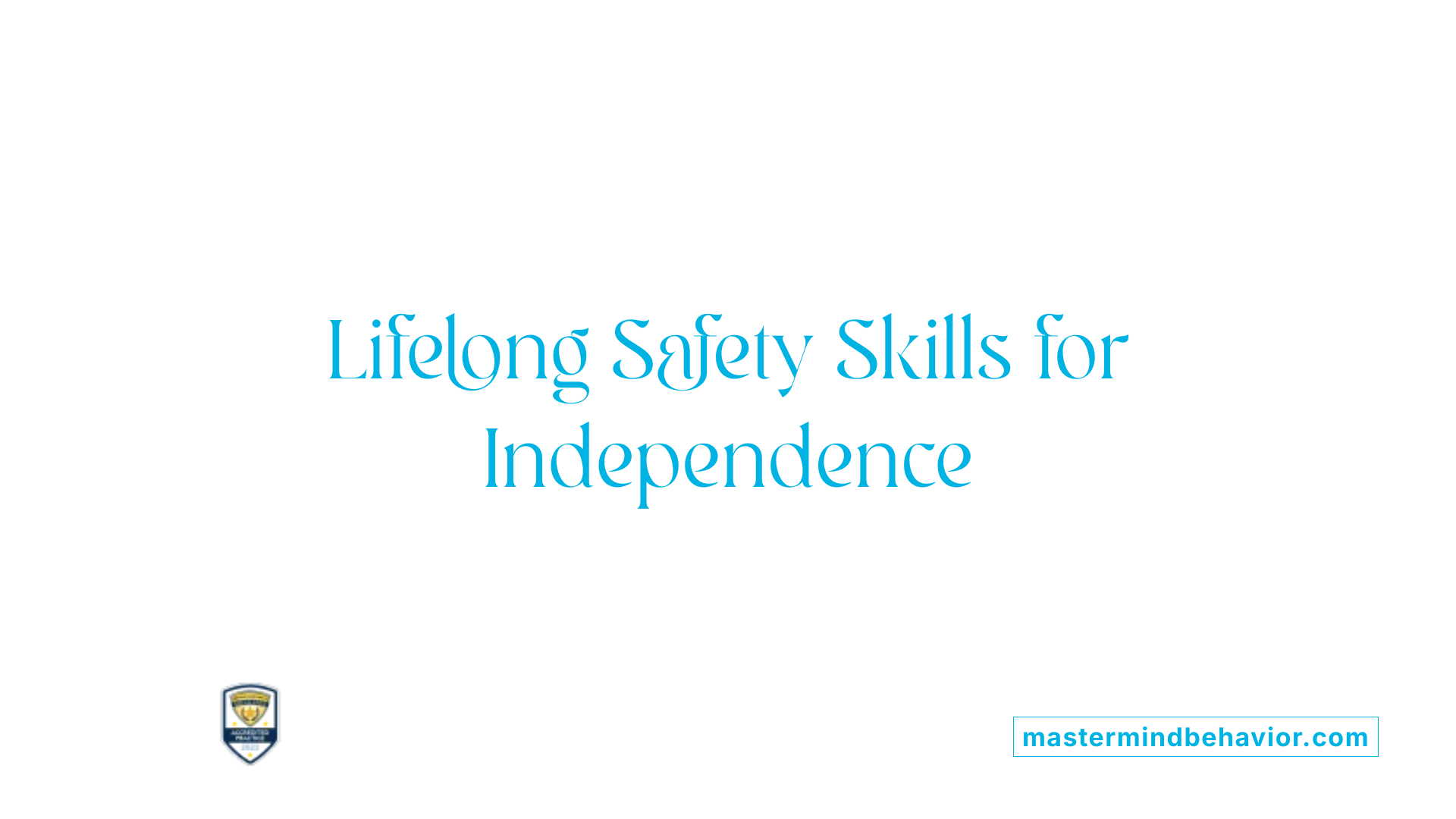
Should safety skills be addressed throughout schooling and across the child's life?
Absolutely. Teaching safety skills is a continuous process that is essential over the entire lifespan of a person with autism. From early childhood through adolescence and adulthood, safety skills help promote independence and prevent accidents or dangerous situations. Schools play a significant role in integrating safety education into the curriculum, ensuring that children acquire essential safety behaviors in natural settings. As children grow, safety training becomes more comprehensive, covering topics like crossing streets independently, online safety, and recognizing unsafe situations.
In addition to school-based learning, family involvement is crucial. Parents and caregivers should reinforce safety skills at home and in community settings. Ongoing education and practice help children develop better awareness of potential dangers and appropriate responses, reducing risks associated with wandering, water hazards, or stranger encounters.
How do safety goals vary according to age and functioning level?
Safety goals are tailored to each child's unique age and developmental capabilities. For young children or those with limited comprehension, safety objectives might focus on basic skills such as holding an adult’s hand on busy streets, recognizing household hazards, or understanding what to do if lost.
As children mature, goals evolve to include more autonomous skills. For adolescents, safety targets can extend to using cell phones to report location, identifying trustworthy community helpers like police or fire personnel, and understanding how to respond appropriately to strangers or dangerous situations.
Older individuals may focus on skills like navigating public transportation, managing personal safety in community settings, and recognizing signs of abuse or harassment. Ultimately, interventions are adapted based on the individual's developmental age, language abilities, and personal safety needs, ensuring that safety education remains relevant and effective.
Tailoring Safety Goals and Integrating into IEPs
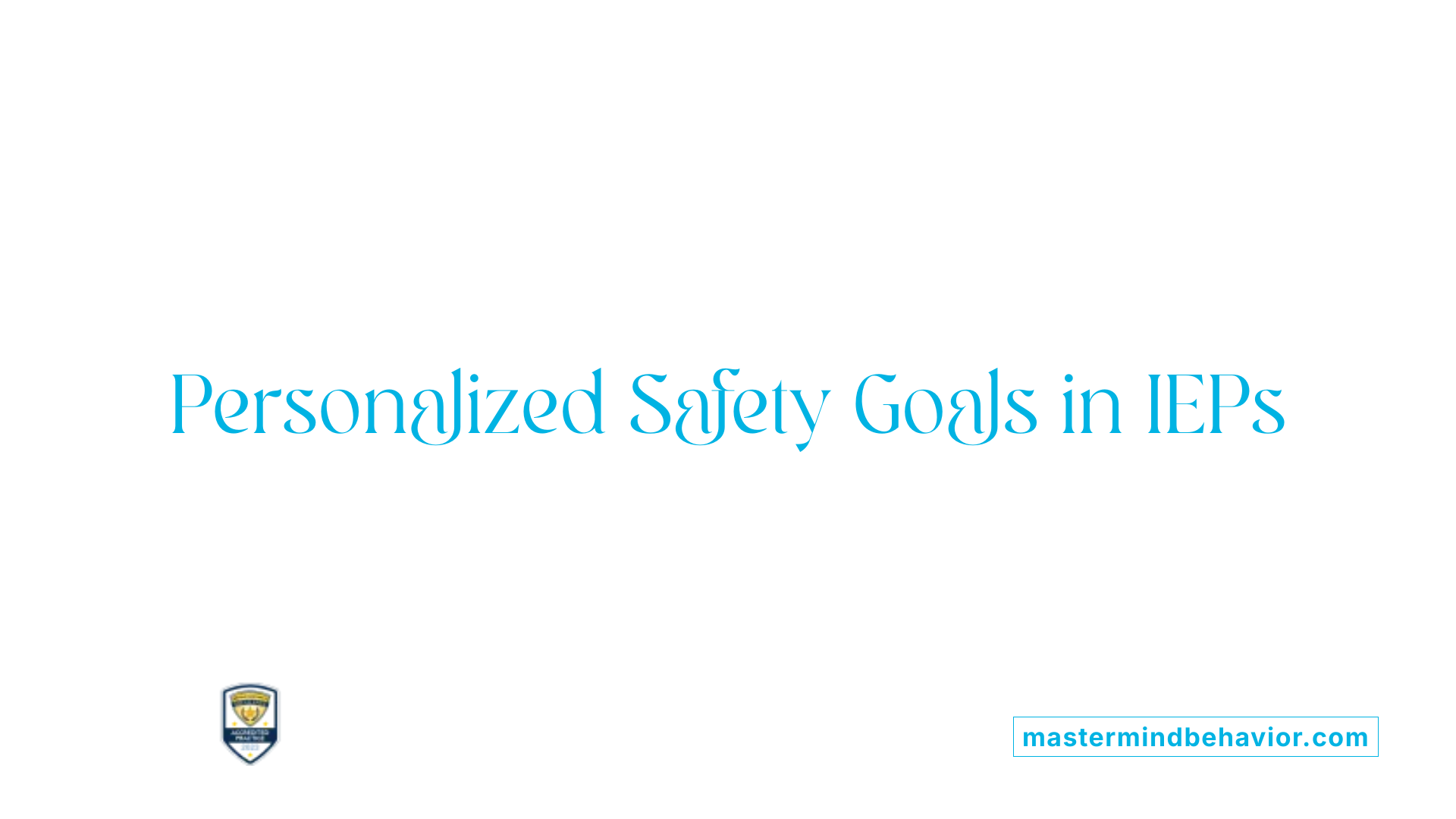
Why Include Safety Skills in the IEP?
Incorporating safety skills into a child's Individualized Education Plan (IEP) ensures that safety education is part of the overall educational approach tailored to the child's needs. It helps set clear objectives for safety behavior development and allows for consistent teaching across school and home environments.
Customizing Goals Based on Individual Needs
Safety goals should be specific to the child's age, functional level, and individual challenges. For example, goals may range from teaching a young child to walk appropriately with an adult to instructing an adolescent on crossing streets independently or using a cell phone to report their location.
Reflecting Family Concerns and Developmental Stage
The IEP team must include family input to make safety goals meaningful and relevant. Family concerns about natural environment safety, online safety, or community access should be considered. Goals should also be developmentally appropriate, progressing as the child grows and gains new skills.
Examples of Safety Goals in the IEP
| Goal Description | Age/Level Focus | Strategies |
|---|---|---|
| Teaching children to recognize and respond to danger | Early childhood | Visual supports, modeling, role-playing |
| Safe street crossing skills | Elementary | Practice with prompts, in situ training |
| Use of technology to report location | Adolescents | Cell phone training, safety scenario practice |
| Responding to strangers or emergencies | All ages | Social stories, scenario-based practice |
Monitoring and Adjusting Safety Goals
Progress should be frequently monitored through data collection and naturalistic assessments. As the child's skills develop, goals should be adjusted to introduce more independence and complex safety skills.
Importance of Collaboration and Resources
Parents, teachers, and community members should collaborate to reinforce safety goals. Utilizing resources from organizations like Autism Speaks, which provides safety tips and tools, enhances the effectiveness of safety planning.
By embedding tailored safety objectives into the IEP and regularly reviewing progress, educational teams can support children with autism in achieving greater independence while maintaining their safety.
Behavioral Skills Training and In Situ Methods
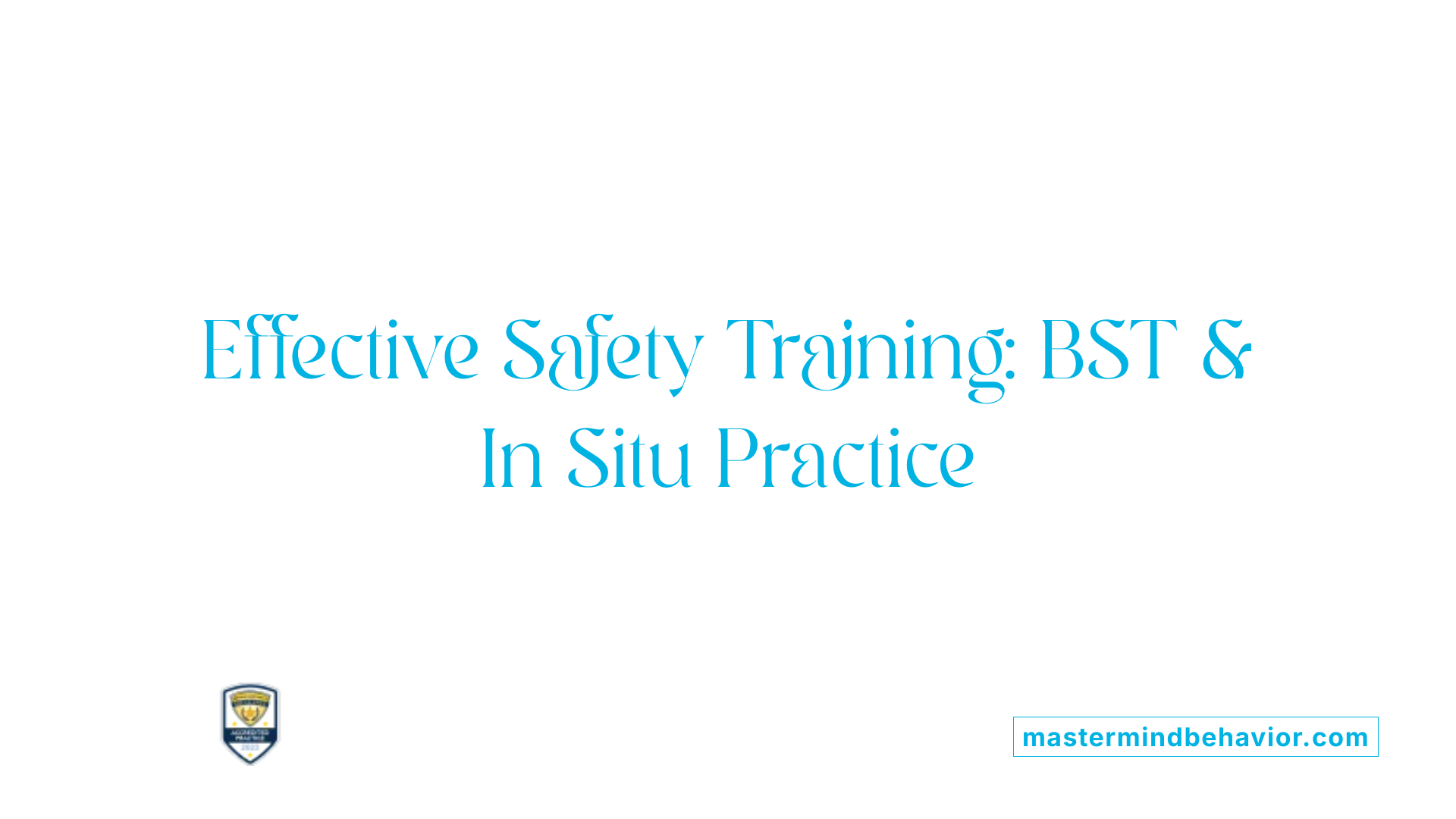
How can parents and educators assess and improve safety skills in children with autism?
Assessing and enhancing safety skills in children with autism requires careful observation and tailored training strategies. Conducting in situ assessments—evaluations in real or similar environments where children naturally encounter safety threats—provides the most accurate picture of a child's responses in authentic situations. These assessments help identify areas needing improvement and measure the child's current safety responses.
Effective training often combines Behavioral Skills Training (BST) and In Situ Training (IST). BST involves teaching safety skills through clear instructions, modeling correct behaviors, having the child practice these behaviors (rehearsal), and providing constructive feedback. This structured approach ensures that children learn safety responses systematically.
IST complements BST by offering immediate, on-the-spot training within the child's natural environment. It allows children to practice safety skills in real-life settings, which enhances the likelihood of skill generalization and retention. For example, a child might practice safely crossing a street under supervision until they can do so independently.
Using visual supports such as picture schedules, social stories, and role-playing exercises helps reinforce safety concepts and provides concrete cues for children to follow. Positive reinforcement, like praise or preferred items, encourages children to repeat safe behaviors.
Regular follow-up assessments are crucial to monitor whether safety skills are maintained over time. Data collection before, during, and after training helps determine the effectiveness of interventions and whether booster sessions are needed.
Collaboration among parents, teachers, and therapists enhances the training's relevance and generalization. Incorporating technology, such as apps or virtual simulations, can also support safety skill development. Tailoring training programs to each child's developmental level and specific safety needs ensures more effective learning.
In summary, assessing safety in natural contexts and providing structured, reinforced training—using BST and IST—are effective ways to help children with autism develop critical safety skills, promoting independence and reducing risks.
Teaching Key Safety Concepts and Skills
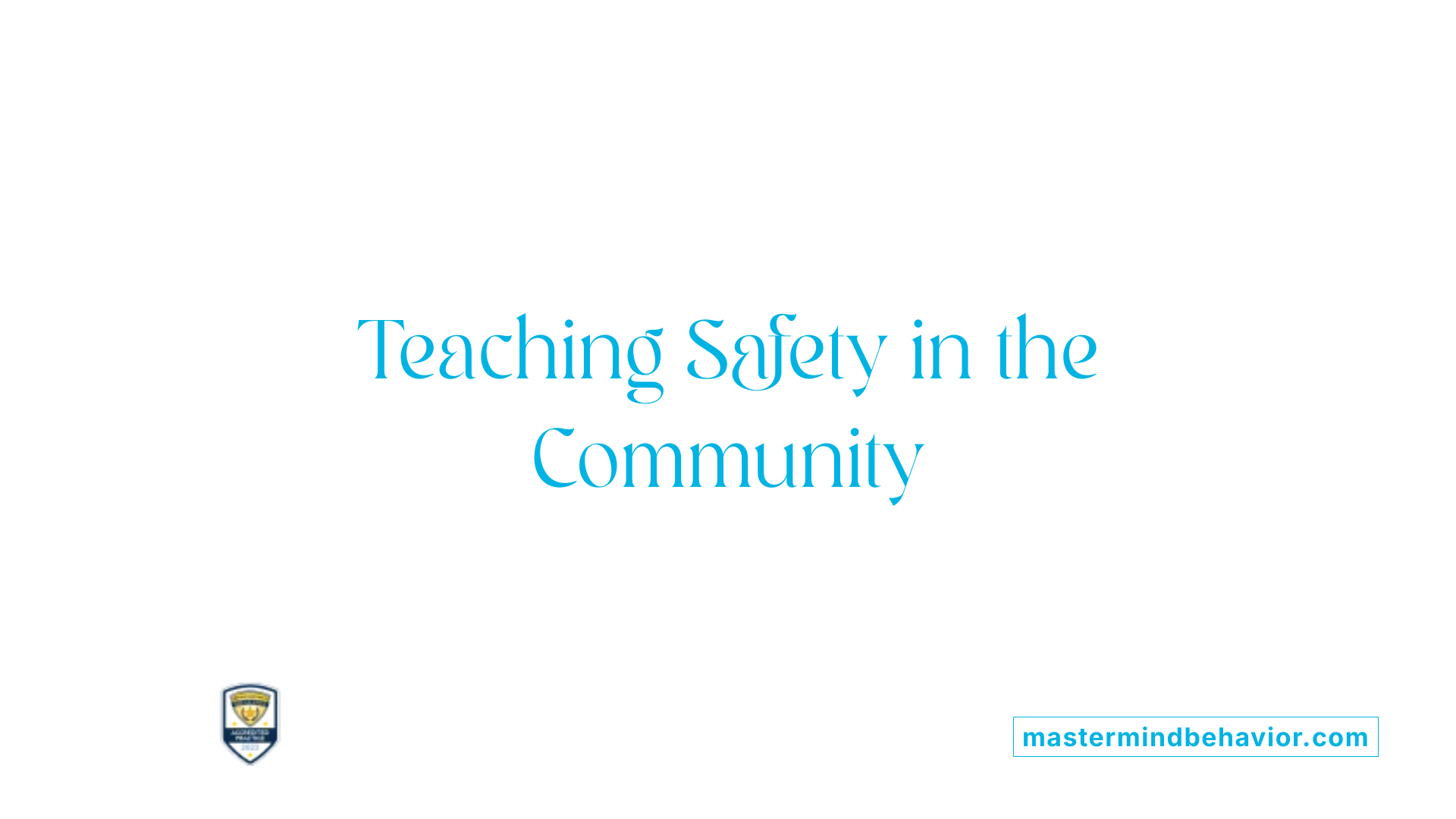
How can caregivers teach children with autism about stranger danger and safety in public or community settings?
Teaching children with autism about safety in the community is vital to prevent dangerous situations and promote independence. Caregivers should approach this education with structured, clear instructions supported by visual aids and role-playing activities. Social stories, which are simple narratives with visual illustrations, help children understand what to expect and how to respond in various scenarios.
A practical method is Behavioral Skills Training (BST), encompassing instructions, modeling, rehearsal, and feedback. For example, a caregiver might demonstrate how to ask for help when lost, then guide the child through practicing the behavior and provide positive reinforcement for correct responses. In situ training (IST) can also be used, where children practice safety skills in real community settings, like at a store or park, to increase generalization.
Teaching children to recognize and approach safe individuals such as police officers, firefighters, or security personnel is also emphasized. Children should know to stay in place if approached by a stranger and seek help from trusted adults. Reinforcing these concepts regularly and in various settings helps solidify understanding.
Creating individualized safety plans tailored to the child's specific needs, including personal information, emergency contacts, and safety routines, is essential. Routine practice, supervision, and collaboration with professionals or therapists further support skill development. Overall, integrating visual supports, role-playing, and behavioral training makes learning about community safety accessible and effective for children with autism.
Practical Techniques and Environment Supports
 When teaching safety skills to children with autism, incorporating visual supports, hands-on experiences, and environmental modifications is essential for effective learning and generalization.
When teaching safety skills to children with autism, incorporating visual supports, hands-on experiences, and environmental modifications is essential for effective learning and generalization.
Use visual schedules, social stories, and picture cards to clearly illustrate safety routines and concepts. These visual tools help children understand potential dangers and safe behaviors without relying solely on verbal instructions. For example, picture cards can depict crossing the street safely, identifying safe helpers like police officers, or recognizing hazards such as hot surfaces.
Incorporating role-playing and hands-on activities allows children to practice safety responses in controlled settings. Role-playing scenarios—like pretending to call 911 or practicing 'stop' and 'wait' commands—provide opportunities for active participation, which enhances understanding and retention.
Implementing environmental safety measures is also crucial. Locks on doors and windows prevent wandering, while barriers such as gates near stairs reduce fall risks. Brightly colored visual boundaries or tape can delineate safe zones from hazardous areas like busy streets or driveways.
These strategies, used together, create a comprehensive safety learning environment. They address individual needs, promote independence, and help children recognize and respond to safety threats effectively. Ensuring ongoing assessment and collaboration with caregivers and community resources further supports the child's safety and confidence.
Long-term Maintenance, Community Collaboration, and Family Role
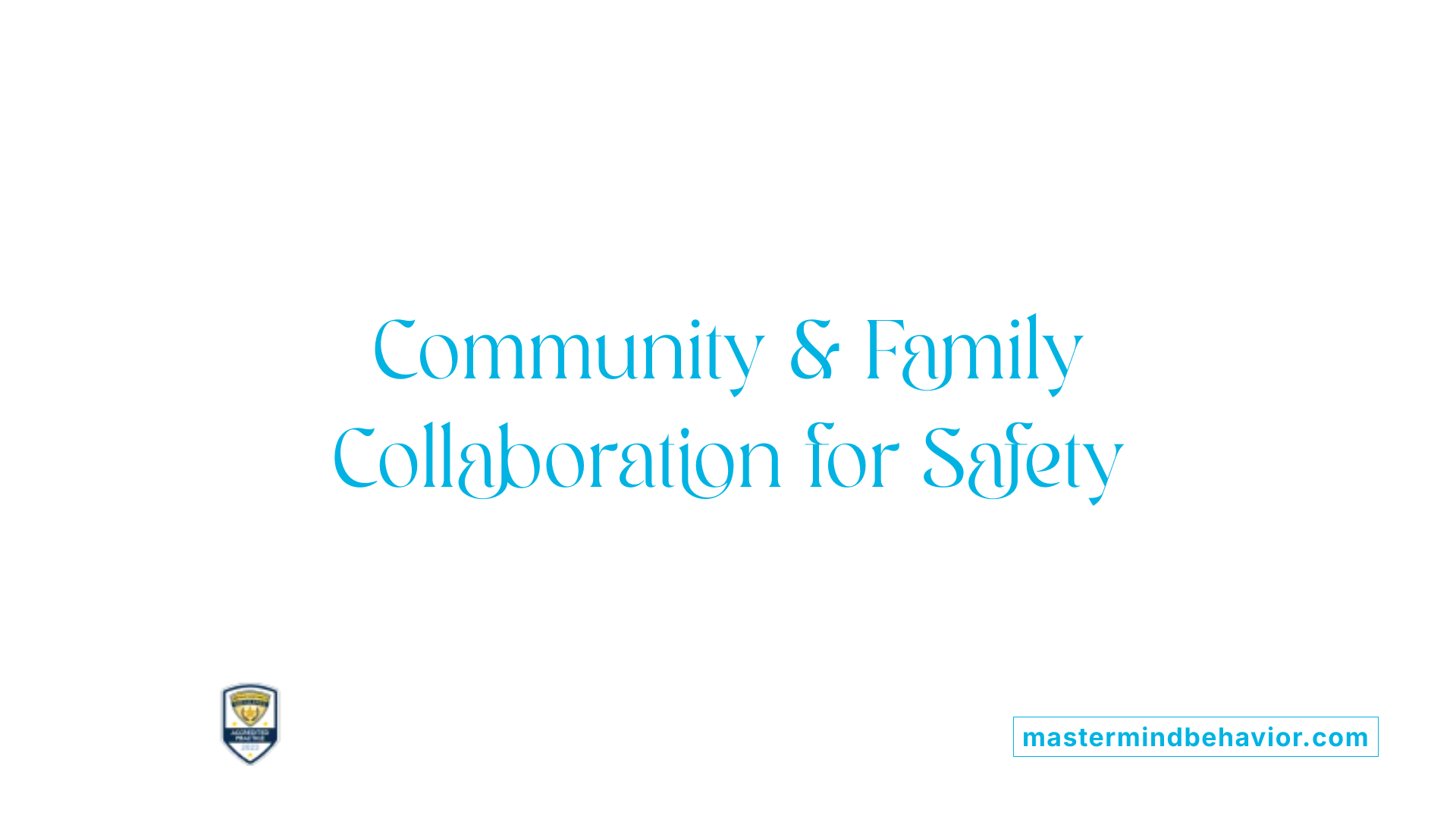
How can caregivers teach children with autism about stranger danger and safety in public or community settings?
Teaching children with autism about how to stay safe in public is vital, given their increased risks of wandering and victimization. Caregivers often use structured approaches that combine visual supports, social stories, and role-playing to clarify safety rules.
A common technique is Behavioral Skills Training (BST), which involves demonstrating safe behaviors, practicing these behaviors through role-playing, and providing feedback. This helps children grasp concepts like staying in place if approached by a stranger, knowing who to ask for help—like police officers or firefighters—and recognizing individuals who are safe versus risky.
In situ training (IST) can complement these methods by providing real-life practice in community settings, enabling children to apply their safety skills in familiar environments. Creating personalized safety plans, including personal information, emergency contacts, and specific behaviors tailored to the child's needs, enhances preparedness.
Ongoing supervision, regular reinforcement, and collaboration with professionals further support children’s safety and independence. Family, school, and community working together ensures consistent messaging and effective safety education, empowering children with autism to navigate their surroundings confidently.
Summary and Final Recommendations
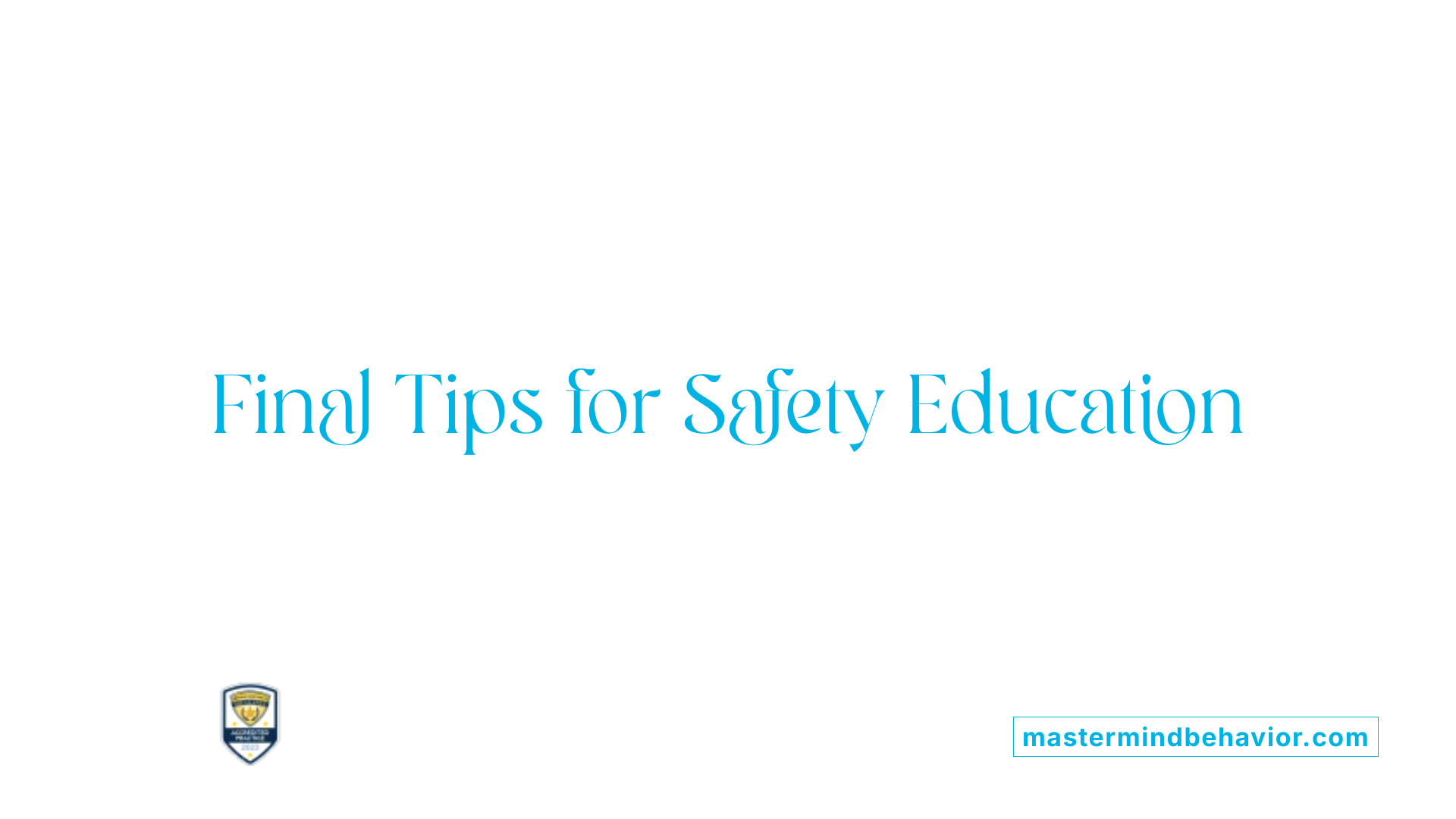 In conclusion, providing safety education to children with autism requires a comprehensive, tailored, and continuous approach. Safety skills should be integrated into the child's daily routines and educational plans, with a focus on individual needs and developmental levels. This personalized planning ensures that children learn relevant safety behaviors that promote independence and protection across various environments.
In conclusion, providing safety education to children with autism requires a comprehensive, tailored, and continuous approach. Safety skills should be integrated into the child's daily routines and educational plans, with a focus on individual needs and developmental levels. This personalized planning ensures that children learn relevant safety behaviors that promote independence and protection across various environments.
Utilizing visual supports such as social stories, picture schedules, and visual cues plays a crucial role in helping children understand safety concepts. These tools make abstract ideas concrete, aiding comprehension of dangers like stranger encounters, fire hazards, and street crossing practices. Engaging children in role-playing and simulated safety scenarios allows for practical practice of responses, reinforcing learning through repetition and feedback.
Positive reinforcement—such as praise, rewards, or tangible incentives—encourages children to demonstrate safe behaviors and helps solidify skills. Incorporating community resources, like police, fire services, and medical personnel, in training sessions exposes children to real-world safety personnel, improving their familiarity and comfort. Collaboration with families, caregivers, and educators ensures consistency and supports the child's safety across all settings.
It is essential to regularly assess and monitor safety skill mastery through ongoing data collection. This helps identify areas needing reinforcement or additional intervention, ensuring skills are maintained over time. When safety education is holistic, individualized, and consistently reinforced, children with autism can develop vital skills that foster independence and protect well-being.
Effective strategies for teaching safety skills to children with autism
- Use evidence-based methods like Behavioral Skills Training (BST) and in situ training (IST)
- Incorporate visual supports such as social stories, picture cards, and schedules
- Practice through role-playing, videos, and simulated activities
- Engage community helpers and environmental cues
- Involve families and educational teams
- Conduct ongoing assessments and data collection
Collaborating for safety
- Partner with local police, fire services, and health providers
- Develop personalized safety plans aligned with the child's unique needs
- Reinforce safety routines at home, school, and community
Research supports that these strategies significantly improve safety awareness and behaviors, reducing risks like wandering, drowning, and injury. Ensuring that safety education is thorough, adaptable, and continuous offers children with autism the best opportunity for safe, independent living.
Ensuring Continuous Safety Through Collaboration and Education
Teaching safety skills to children with autism requires a tailored, comprehensive approach that involves visual supports, hands-on practice, and active collaboration among families, educators, and community resources. Using evidence-based methods such as Behavioral Skills Training and In Situ Training, combined with ongoing assessment and reinforcement, helps children learn to navigate their environment safely. The development of individualized safety plans, supported by resources from organizations like Autism Speaks, enhances preparedness and response during emergencies. Long-term commitment to safety education, regular review, and community engagement are vital for fostering independence and minimizing risks, ensuring children with autism can explore their world with confidence and security.
References
- Teaching Safety Skills to Adolescents
- Autism and safety
- Teaching Children with Autism About Safety - May Institute
- Teaching Safety Skills for Autism | Keeping Kids with Autism Safe
- Teaching Safety Skills to Children: A Discussion of Critical Features ...
- 10 Tips To Effectively Teach Child Safety To An Autistic Child
- Teaching Safety to a Child with Autism - Golden Care Therapy
- Strategies For Enhancing Safety For Autistic Children










